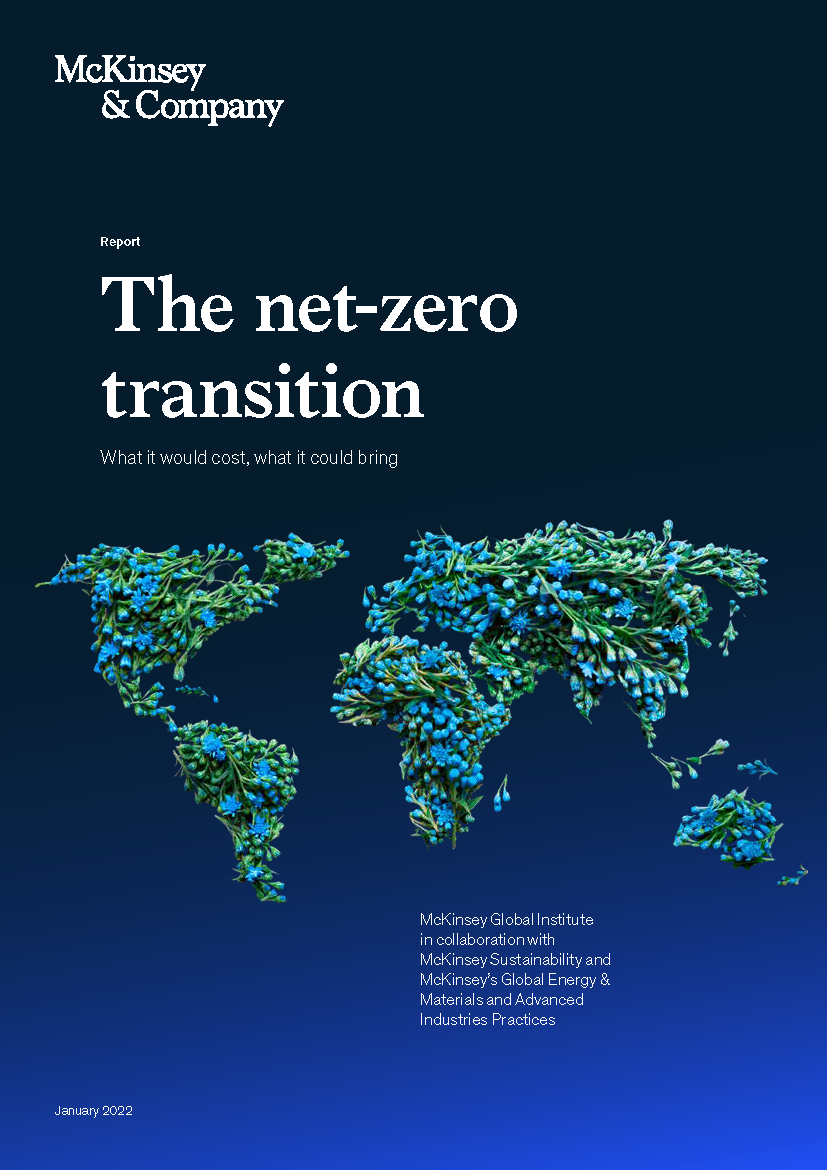
Mekala Krishnan, Hamid Samandari, Jonathan Woetzel, Sven Smit, Daniel Pacthod, Dickon Pinner, Tomas Nauclér, Humayun Tai, Annabel Farr, Weige Wu, Danielle Imperato (2022), McKinsey Global Institute in collaboration with McKinsey Sustainability and McKinsey’s Global Energy & Materials and Advanced Industries Practices, 208 p., https://www.mckinsey.com/capabilities/sustainability/our-insights/the-net-zero-transition-what-it-would-cost-what-it-could-bring
Governments and companies worldwide are pledging to achieve net-zero emissions of greenhouse gases. What would it take to fulfill that ambition?
In a new report, we look at the economic transformation that a transition to net-zero emissions would entail—a transformation that would affect all countries and all sectors of the economy, either directly or indirectly. We estimate the changes in demand, capital spending, costs, and jobs, to 2050, for sectors that produce about 85 percent of overall emissions and assess economic shifts for 69 countries.
Download pdf of the Full report or the Executive summary of The net-zero transition: What it would cost, what it could bring.
The next six web articles provide a detailed look at aspects of the net-zero transition.
Six characteristics define the net-zero transition.
The net-zero challenge: Accelerating decarbonization worldwide.
The economic transformation: What would change in the net-zero transition.
Sectors are unevenly exposed in the net-zero transition.
How the net-zero transition would play out in countries and regions.